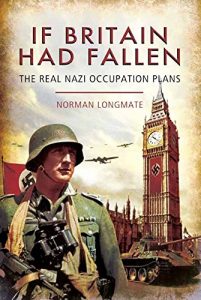
“Dunkirk” film: What if Hitler had Launched an Invasion?
For more than a thousand years, the tribes of Europe have stared into the gun-metal-gray chop of the English Channel and thought of conquest. “We have six centuries of insults to avenge,” said Napoleon. I was just there, on the same spring week when the great bedraggled scraps of the French and British armies were cornered for slaughter by the Nazi war machine 77 years ago.[The film is an] intimate look at what Winston Churchill called “a colossal military disaster”… minds otherwise gone soft by the heartless current governing policies of the United States can turn to a day when bigger minds guided Western democracies.
That is a good critique of the Dunkirk movie’s lapses—as far as it goes. Egan doesn’t say that viewers of the film receive no insight to those “bigger minds.” Aside from Churchill, they ranged from Admiral Ramsay in his Dover bunker to the valiant women telephonists, among the last off the beaches, whom we never see.
Invasion 1940
 The best book to contemplate a Nazi invasion is Norman Longmate’s If Britain Had Fallen, first published in 1972 but recently republished and available from Amazon. It includes this “nightmare scenario”:
The best book to contemplate a Nazi invasion is Norman Longmate’s If Britain Had Fallen, first published in 1972 but recently republished and available from Amazon. It includes this “nightmare scenario”:
Later that afternoon with the Germans already in Trafalgar Square and advancing down Whitehall to take their position in the rear, the enemy unit advancing across St. James’s Park made their final charge. Several of those in the Downing Street position were already dead…and at last the Bren ceased its chatter, its last magazine emptied.
Churchill reluctantly abandoned the machine-gun, drew his pistol and with great satisfaction, for it was a notoriously inaccurate weapon, shot dead the first German to reach the foot of the steps. As two more rushed forward, covered by a third in the distance, Winston Churchill moved out of the shelter of the sandbags, as if personally to bar the way up Downing Street. A German NCO, running up to find the cause of the unexpected hold-up, recognised him and shouted to the soldiers not to shoot, but he was too late. A burst of bullets from a machine-carbine caught the Prime Minister full in the chest. He died instantly, his back to Downing Street, his face toward the enemy, his pistol still in his hand.
Longmate’s thriller
This chilling invasion scene is the crux of Norman Longmate’s book. His “what if” story of a successful German invasion in 1940 is thoroughly believable, thus all the more frightening. If Britain Had Fallen is based on a BBC television film of the same name.
It is not the first book to contemplate a German invasion and occupation of the British Isles. The first was Erskine Childers’ The Riddle of the Sands (1903). Saki (H.H. Munro) wrote When William Came (1913). C.S. Forester penned a short story, If Hitler had Invaded England (1967). But previous works covered just one phase of the subject—preparations, landings, campaigns. Longmate covers them all, together with his fancied outcome.
The first four (factual) chapters describe German/British pre-invasion maneuvering. The last thirteen are believable fiction: what the German occupation would have been like. Longmate refers to captured documents and how the Germans actually behaved in conquered lands. One of these was the small corner of Britain they actually did occupy, the Channel Islands.
Goering’s “right decision”
The plot hinges on what was in fact the key to RAF victory in the Battle of Britain. This was Hermann Goering’s decision switch from military targets and bomb open cities. In this book, Goering behaves in the opposite way.
The Luftwaffe’s orders were decisive. Knock out the radar stations. Then attack the forward airfields, fighter stations, sector and group headquarters:
Every bomb and every bullet was to be aimed at an Air Force target. The renewed attack on the radar chain took Fighter Command by surprise and soon ominous gaps were appearing on the plotting boards at 11 Group Headquarters at Uxbridge and at Fighter Command at Bentley Priory, Stanmore…And, final proof that the RAF was losing the battle, the Stuka dive-bombers again flew far inland and got safely home.
Longmate next refers to German documents and plans for “Operation Sea Lion.” “S-Day” is 24 September 1940, in the small hours under a bright moon. Landings are made from Dover to Lyme Regis. Swarms of Messerschmitts and Junkers 88s range the skies at will. Rapidly, the Wehrmacht seals off the Kentish coast and establishes a line from Margate to Brighton. Soon the entire peninsula from Woolwich to Southampton is occupied. The Royal Family reluctantly leaves London—followed by the Downing Street scene described above.
Debacle
Longmate’s scary book ends in excruciating detail. Of course Gestapo rounds up Jews. The fascist Sir Oswald Mosley is asked to be Britain’s Quisling. I won’t spoil the rest: What happens to the King and the government? What would America have done in the event? Would Canada and Australia have come to the rescue? How would the British have dealt with occupation? Would they feel hostile toward the resistance fighters? Would the deportation of friends, the swastika flying from Buckingham Palace, incite docility or resistance? Get a copy and find out. This is a non-essential but thought-provoking addition to the Churchill library.






